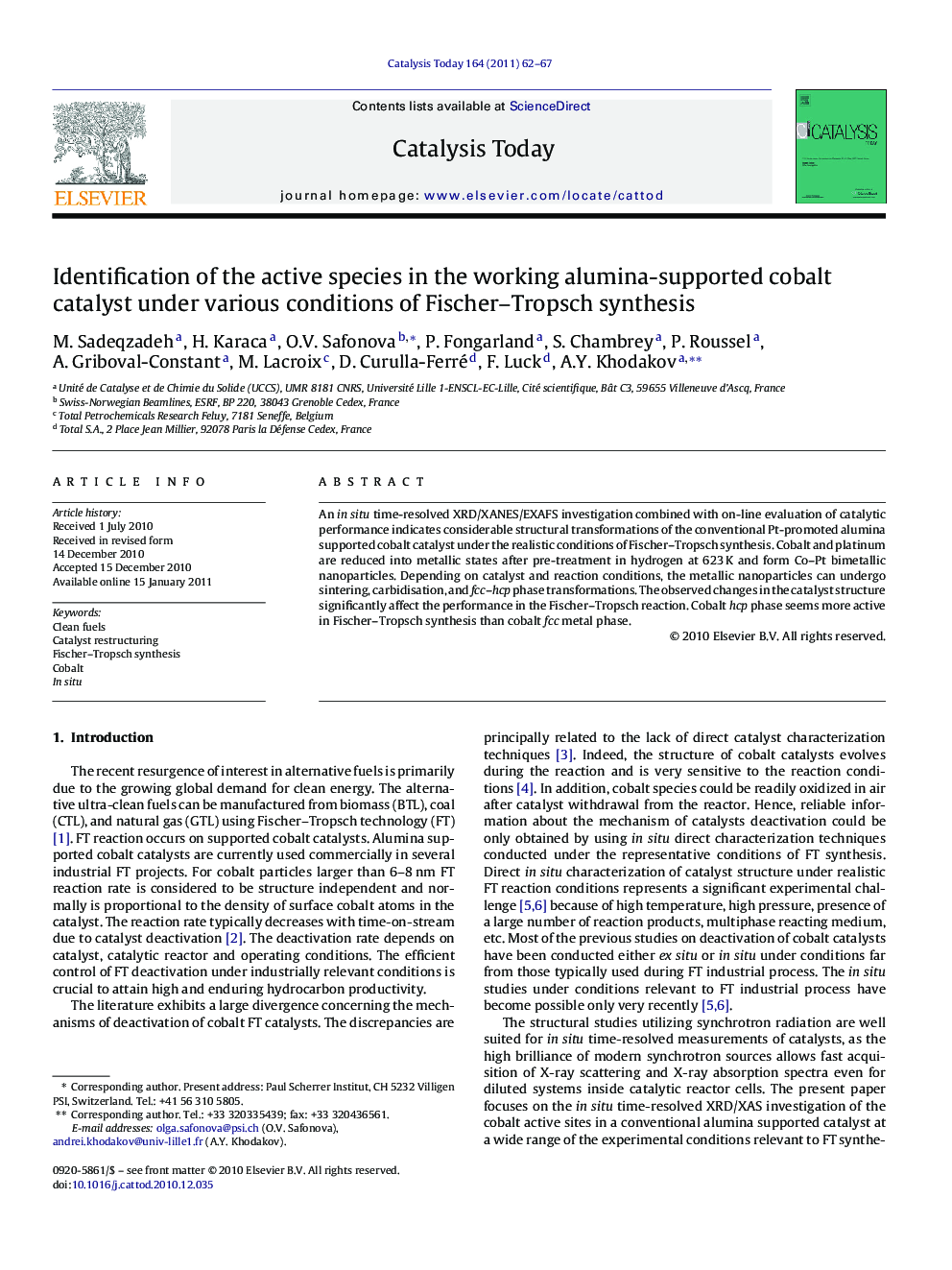| Article ID | Journal | Published Year | Pages | File Type |
|---|---|---|---|---|
| 56299 | Catalysis Today | 2011 | 6 Pages |
An in situ time-resolved XRD/XANES/EXAFS investigation combined with on-line evaluation of catalytic performance indicates considerable structural transformations of the conventional Pt-promoted alumina supported cobalt catalyst under the realistic conditions of Fischer–Tropsch synthesis. Cobalt and platinum are reduced into metallic states after pre-treatment in hydrogen at 623 K and form Co–Pt bimetallic nanoparticles. Depending on catalyst and reaction conditions, the metallic nanoparticles can undergo sintering, carbidisation, and fcc–hcp phase transformations. The observed changes in the catalyst structure significantly affect the performance in the Fischer–Tropsch reaction. Cobalt hcp phase seems more active in Fischer–Tropsch synthesis than cobalt fcc metal phase.
